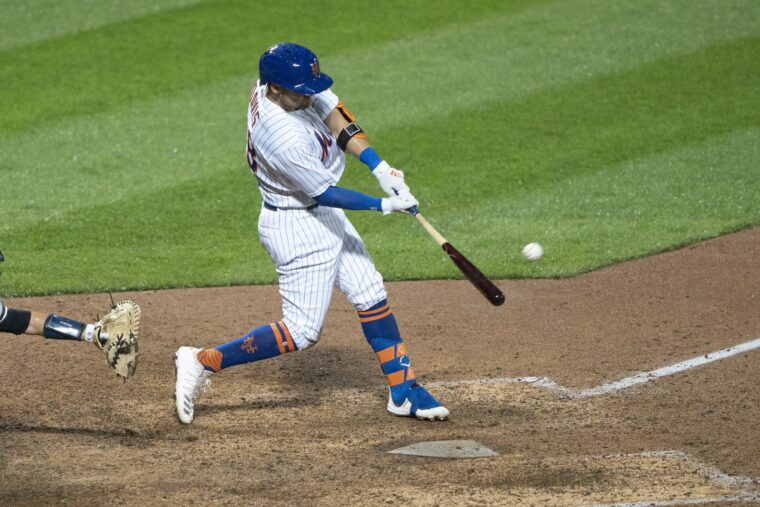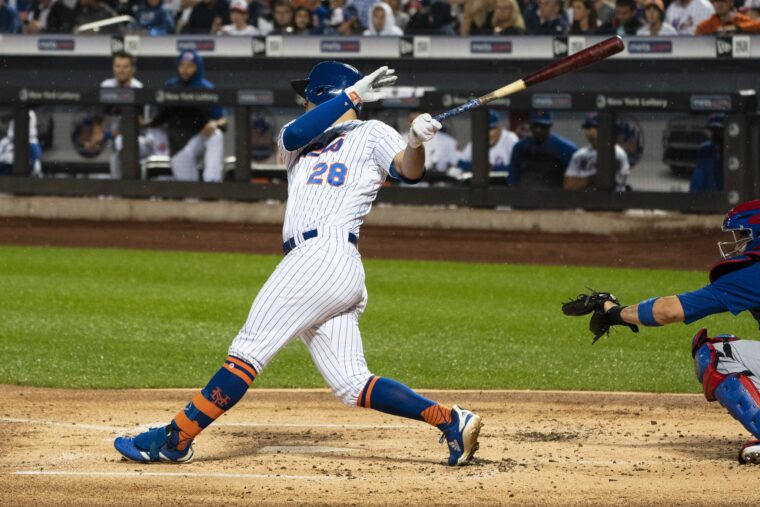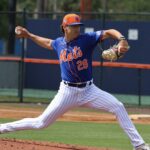
Depending on the statistics you look at, New York Mets infielder/outfielder J.D. Davis had either a decent year or a disappointing one after an encouraging 2019 breakout.
When peeping his 117 wRC+, it appears his offensive production was firmly above league average. However, that was mostly propped up by a career-high 13.5% walk rate, as his .247/.371/.389 line wasn’t nearly as fun to look at as the .307/.369/.527 triple slash he posted the year prior.
His BABIP (.355 to .318), ISO (.220 to .142), and hard-hit rate (41.3% to 34.8%) all took a dive when comparing the last two seasons against one another. But what actually happened?
Killing the Grass
In the middle of September, our own Thomas Hall discussed how a drop in launch angle was hampering Davis’ overall production. Outside of specifically breaking down the right-handed hitter’s launch angle, the proof is also in the batted-ball profile.
Here’s how the past two seasons compare, despite the uneven sample sizes:

For a hitter who had previously struggled with hitting lots of ground balls, this is a trend nobody wanted to see tick back up in the wrong direction. When splitting up his shortened season into two abbreviated halves, it’s clear that most of this unfortunate damage came in the second half, as it went from 51.7% to 59.7% between these two periods of time.
It’s not a surprise to see Davis’ overall power get sapped upon noticing the above shift in his batted-ball profile from one year to the next. When a significant shift like this takes place, it always makes me wonder if there were certain pitches that led to this more than others.
Pointing to four-seamers and sinkers is easy to do, especially because those are commonly the pitches that hitters most frequently see, but for Davis, breaking pitches did a number on him.
Back-Breaking Pitches
Davis saw six different pitches at least 50 times during the 2020 season (four-seamer, sinker, slider, changeup, curveball, and cutter). Among those six, all versions of fastballs (four-seamers, sinkers, cutters) weren’t a problem — he posted a wRC+ of 140 or higher against each.
He struggled more against changeups this year (96 wRC+) than last year (141), but he was at least within shouting distance of being league average. As I’ve been building up for a couple paragraphs now, it was sliders and curveballs that were the issue.
In 2019, Davis posted a 145 wRC+ and .202 ISO against sliders. Those numbers dropped significantly to 10 and .042 (!), respectively, in 2020. The drop in production against curveballs wasn’t nearly as stark, but still noticeable: his wRC+ went from 99 to 39 and his ISO went from .184 to .000.
And when focusing on batted-ball outcomes, it’s not as if there was a huge rise in ground-ball rate for four-seam fastballs and sinkers. There was barely any difference, as four-seamers went from 39.5% to 40.9% and sinkers went from 63.6% to 60.0%. Davis’ ground-ball rate on cutters did jump from 53.3% to 70.0%. However, it’s worth noting that among the six offerings currently in question, the 27-year-old saw cutters the least often (58 times).
Shifting back to the breaking pitches, check out how Davis’ batted-ball profile changed between 2019 and 2020 for each offering.

Davis did post a 45 wRC+ on ground balls in 2020, which isn’t terrible considering that’s the batted-ball event with typically the lowest success rate. However, it’s a step back from the 68 he posted in 2019, and it’s coupled with a decrease in hard-hit rate (32.4% to 25.0%) and a rise in soft-hit rate (13.5% to 21.1%).
What Lies Ahead
One of the biggest reasons why general manager Brodie Van Wagenen acquired Davis from the Houston Astros two winters ago was to give the Mets’ roster depth and flexibility. His ability to hit while playing both the infield and outfield have helped accomplish that, but now he’s part of the roster logjam that’s coming to a head for New York’s position players.
It’ll depend on what the Mets do from here with regard to external additions. Judging on what we think Steve Cohen wants to do this winter, though, it won’t take long.
If the Mets find themselves a center fielder, Brandon Nimmo could be a name that rolls through trade rumors. If New York does supplement the outfield in some way, it’ll lead to more of a roster crunch in the infield as players like Dominic Smith, Jeff McNeil, Robinson Cano, and Pete Alonso all look for regular playing time, especially if there indeed is no Designated Hitter next year. Having a DH in play doesn’t solve everything here, but it would make things a little easier to get everyone’s bat into the lineup consistently.
With a number of players likely to see their names get tossed around the Hot Stove this winter, it seems likely that Davis will be one of them. He feels like the most expendable player at this point, but he may also need to be part of a multi-player package if the Mets were looking for more than to just make space on their current roster.
This winter’s hot stove may be especially cold because of COVID-19’s economic impact on the league, but it’s looking like we’ll be thanking the Mets for keeping things interesting, for a change. That also means it’ll lead to some tough decisions by the front office with regard to roster construction, and how stays and who goes.
















